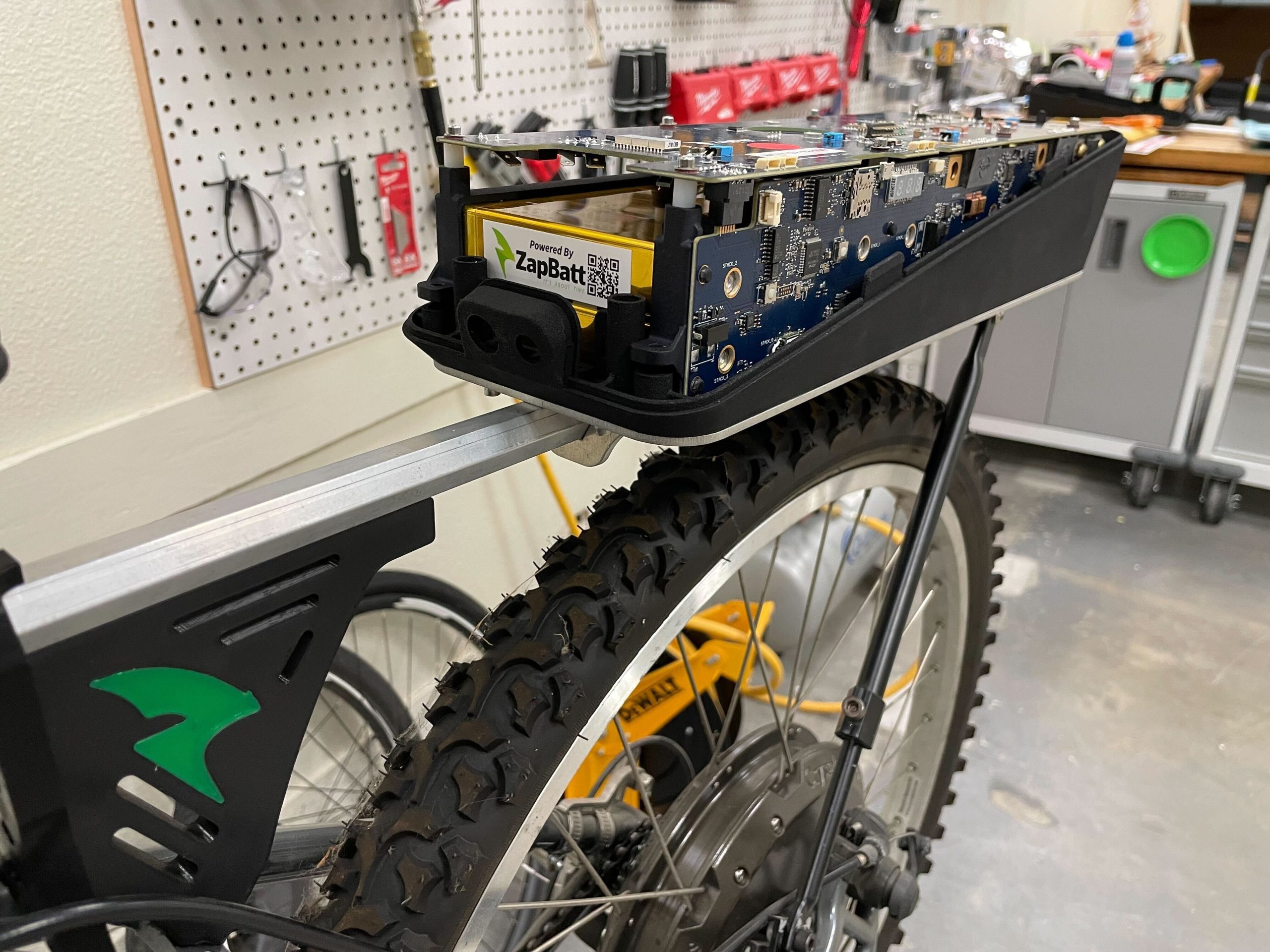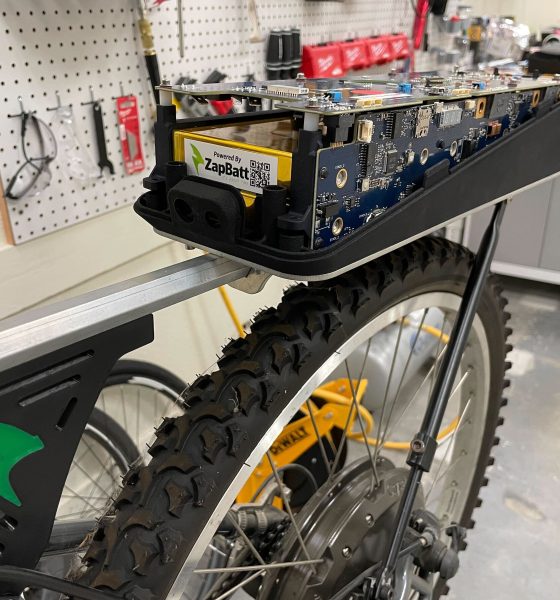ZapBatt and Toshiba are partnering to unlock proven lithium titanium oxide (LTO) battery technology for micro-mobility. In a press release emailed to me, ZapBatt shared that it’s merging its proprietary artificial intelligence technology and next-gen battery hardware with Toshiba’s lithium titanium oxide battery cells.
The goal is to create a new battery option for the micro-mobility marketplace. This will enable LTO batteries to be faster, smarter, and more economical while allowing for real-time battery management and optimization.
Three challenges of using Lithium Titanium Oxide chemistry in batteries solved
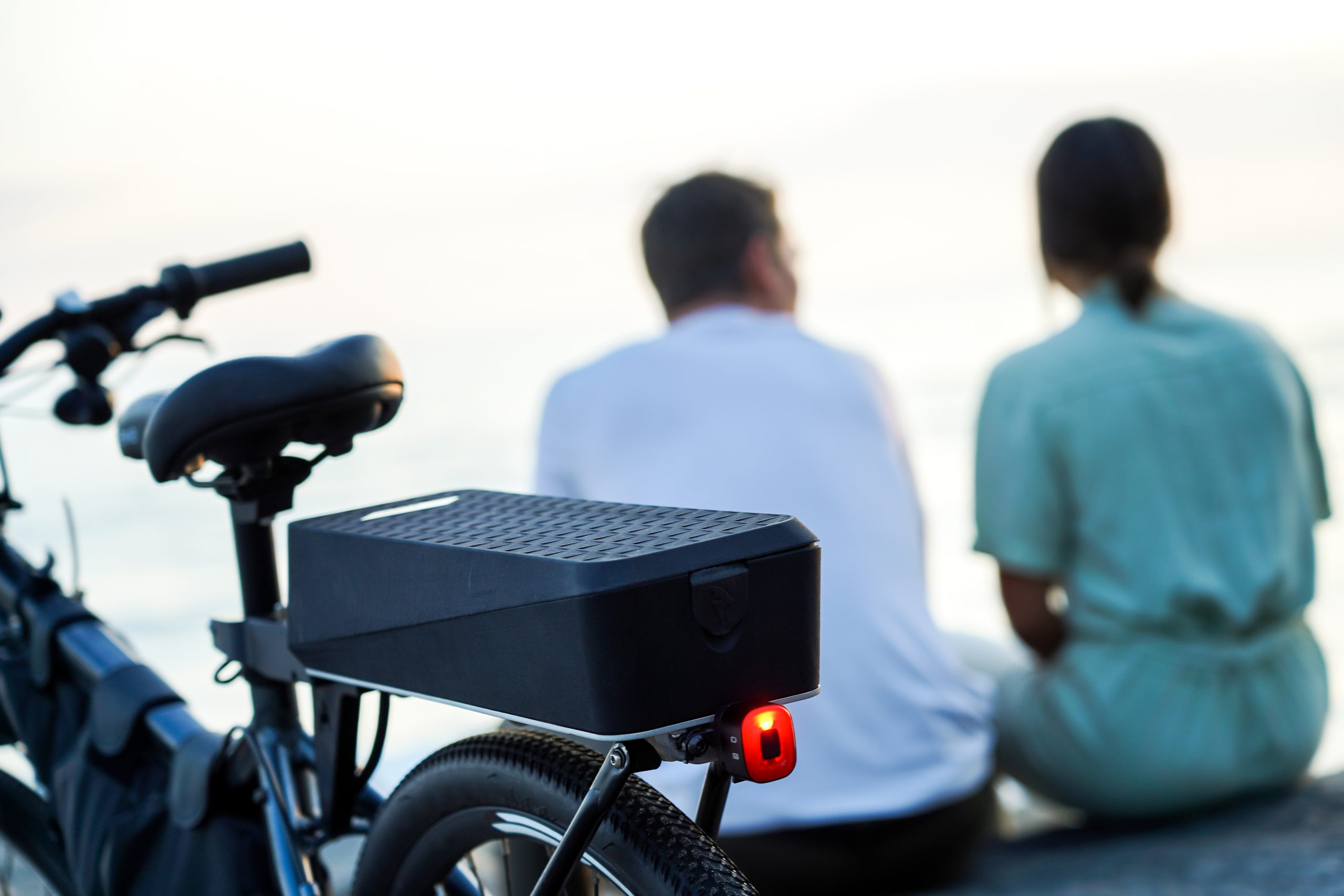
Photo credit: ZapBatt
There are three challenges of using LTO chemistry in batteries that ZapBatt is helping Toshiba solve.
- Chips. At the time, chips didn’t exist to work with LTO, however, ZapBatt’s custom LTO battery management system (BMS) is changing this. The BMS works at the unique voltages of LTO with the ability to be re-configured to adapt as the cell chemistry grows. This enables a programmable chip that works with other chemistries and voltages.
- Voltage. ZapBatt has a bi-directional adaptive terminal voltage (BATV) technology. This allows the battery system’s voltage control to be digitally controlled with software. Think of a universal adapter that allows LTO batteries to be a one-for-one swap with any lithium-ion chemistry without the need for modification to the system. The benefit is the ability to re-configure batteries for other applications at software speed.
- Energy Density. ZapBatt will use integrated AI which allows the battery to improve the system’s performance. The AI will analyze how energy is being used. One example is enhanced regenerative braking in e-bikes.
Toshiba & ZapBatt Statements
Greg Mack, Toshiba’s Vice President and General Manager of the Power Electronics Division shared the following statement about the new partnership.
“ZapBatt unlocked the potential of Toshiba’s LTO chemistry for a variety of industries and new markets with disruptive technology, moving away from the ‘miracle battery’ trap and providing a real solution hitting the market today.”
“With ZapBatt’s hardware and software, and our LTO chemistry, there is no other solution as fast, safe, and cost-effective on the market.”
Charlie Welch, CEO and Co-Founder of ZapBatt also shared a statement.
“For global carbon reduction and electrification, we need better battery solutions now, not in ten years. To address this problem, we worked with Toshiba to allow lithium titanium oxide to come alive, bridge into new markets quickly, and provide maximum economic and environmental benefit.”
“Unlike other chemistries, lithium titanium oxide is very efficient in a variety of conditions, not just on a lab bench. It’s like the Seabiscuit of batteries.”
How Toshiba’s Lithium Titanium Oxide Cells Will Work
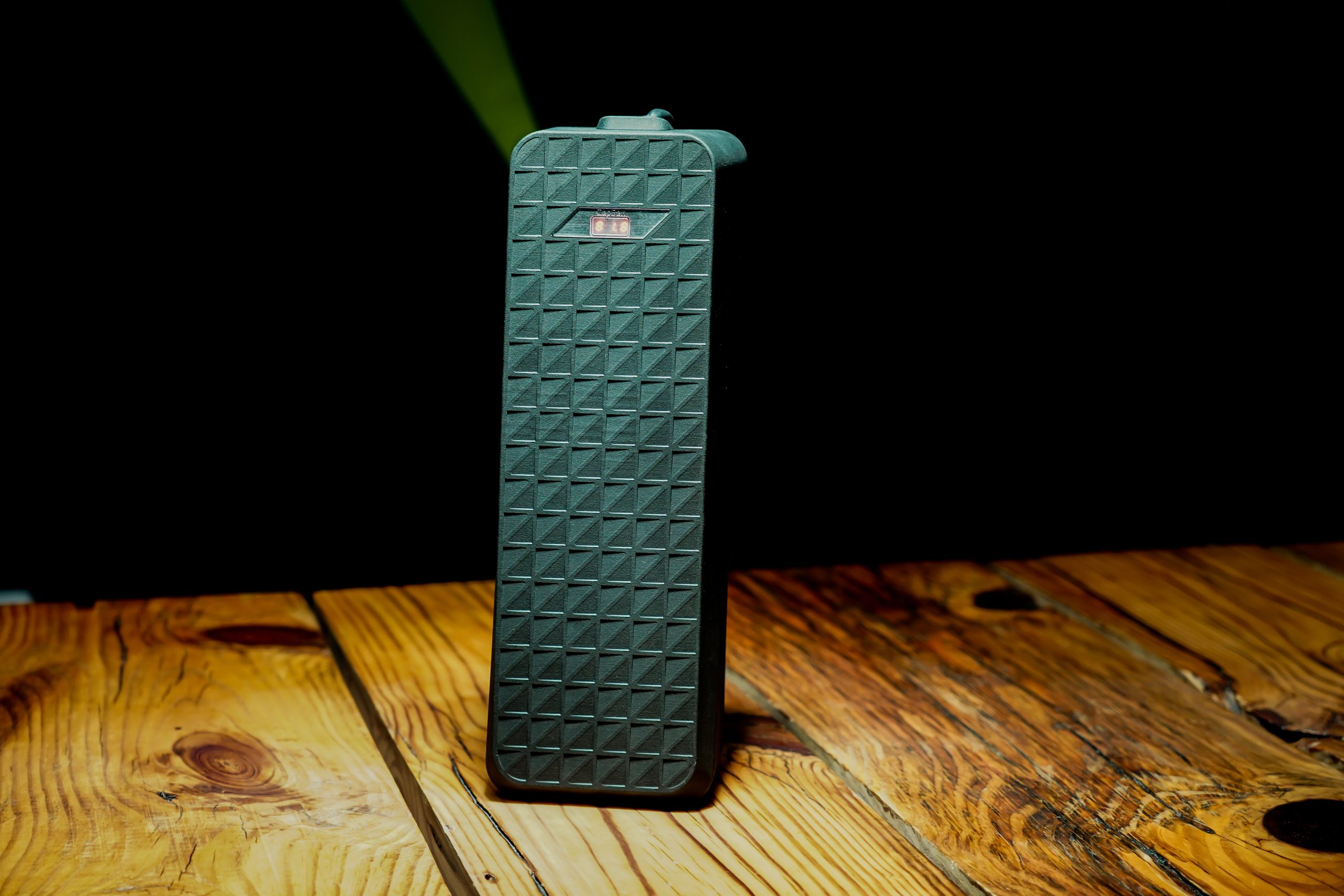
The company noted that the cells are designed for fast charging and high-power environments with a minimal decrease in function–even after thousands of charges and uses.
These cells are ideal for micro-mobility applications and will provide up to a 100% usable charge without shortening the cycle life. They also perform in freezing temperatures as low as -30 degrees celsius.
The LTO cells also reduce operating expenses and e-waste. And they eliminate the risk of fire with ZapBatt’s LTO system. ZapBatt noted that its LTO batteries have virtually no risk for self-thermal runaway.
In addition to this, ZapBatt pointed out that its combination of machine learning and proprietary hardware will continuously improve battery performance. The software analyzes 26 data points that illustrate how the battery performs to improve charging operations.
ZapBatt’s New Hardware Solution
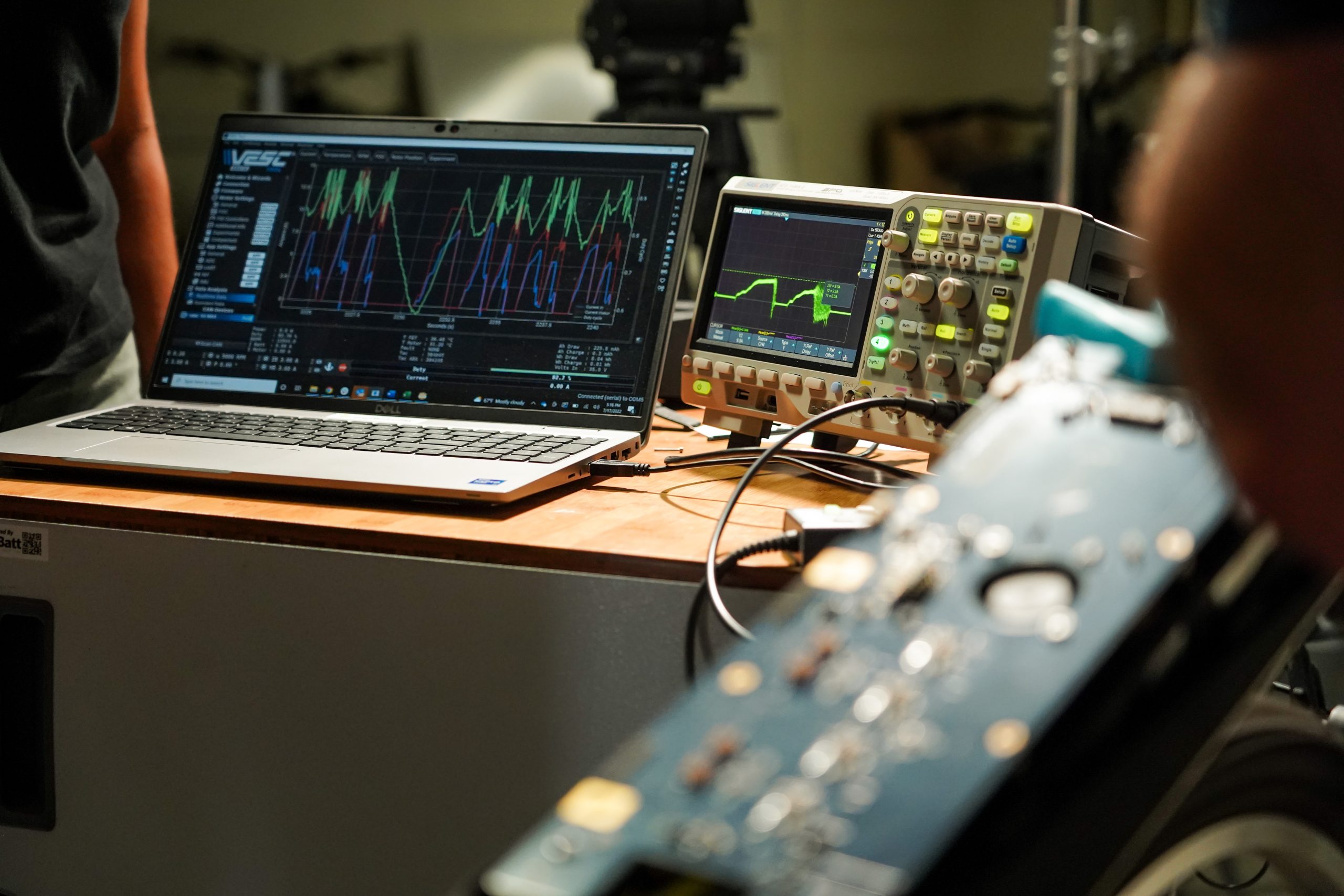
ZapBatt built a new hardware solution for its LTO BATV system. The BATV system allows the system to control the battery voltage input and output all digitally with software. This allows LTO batteries to integrate with a variety of applications.
Amiad Zionpur, ZapBatt’s Chief Operating Officer shared some thoughts about this technology.
“ZapBatt’s bi-directional adaptive terminal voltage (BATV) technology allows the battery to reconfigure itself based on the customer’s needs, essentially making it a universal adapter that has the potential to change the battery landscape completely.”
“Because of this unique ability, the e-bike battery can be used in many different applications, from micro-mobility to consumer products.”
My Interview With ZapBatt CEO, Charlie Welch
In June, I interviewed Charlie for CleanTechnica in a two-part series. In the first part, which you can read here, Charlie shared how he got started with ZapBatt, the difference between ZapBatt and the overall battery industry, and charging in just 15 minutes.
In the second part of our interview, which you can read here, we spoke about overlooked technologies, the industries that ZapBatt wants to impact, and availability and sustainability.

Investor's Corner
SpaceX IPO is coming, CEO Elon Musk confirms
However, it appears Musk is ready for SpaceX to go public, as Ars Technica Senior Space Editor Eric Berger wrote an op-ed that indicated he thought SpaceX would go public soon. Musk replied, basically confirming it.

Elon Musk confirmed through a post on X that a SpaceX initial public offering (IPO) is on the way after hinting at it several times earlier this year.
It also comes one day after Bloomberg reported that SpaceX was aiming for a valuation of $1.5 trillion, adding that it wanted to raise $30 billion.
Musk has been transparent for most of the year that he wanted to try to figure out a way to get Tesla shareholders to invest in SpaceX, giving them access to the stock.
He has also recognized the issues of having a public stock, like litigation exposure, quarterly reporting pressures, and other inconveniences.
However, it appears Musk is ready for SpaceX to go public, as Ars Technica Senior Space Editor Eric Berger wrote an op-ed that indicated he thought SpaceX would go public soon.
Musk replied, basically confirming it:
As usual, Eric is accurate
— Elon Musk (@elonmusk) December 10, 2025
Berger believes the IPO would help support the need for $30 billion or more in capital needed to fund AI integration projects, such as space-based data centers and lunar satellite factories. Musk confirmed recently that SpaceX “will be doing” data centers in orbit.
AI appears to be a “key part” of SpaceX getting to Musk, Berger also wrote. When writing about whether or not Optimus is a viable project and product for the company, he says that none of that matters. Musk thinks it is, and that’s all that matters.
It seems like Musk has certainly mulled something this big for a very long time, and the idea of taking SpaceX public is not just likely; it is necessary for the company to get to Mars.
The details of when SpaceX will finally hit that public status are not known. Many of the reports that came out over the past few days indicate it would happen in 2026, so sooner rather than later.
But there are a lot of things on Musk’s plate early next year, especially with Cybercab production, the potential launch of Unsupervised Full Self-Driving, and the Roadster unveiling, all planned for Q1.
News
Tesla adds 15th automaker to Supercharger access in 2025
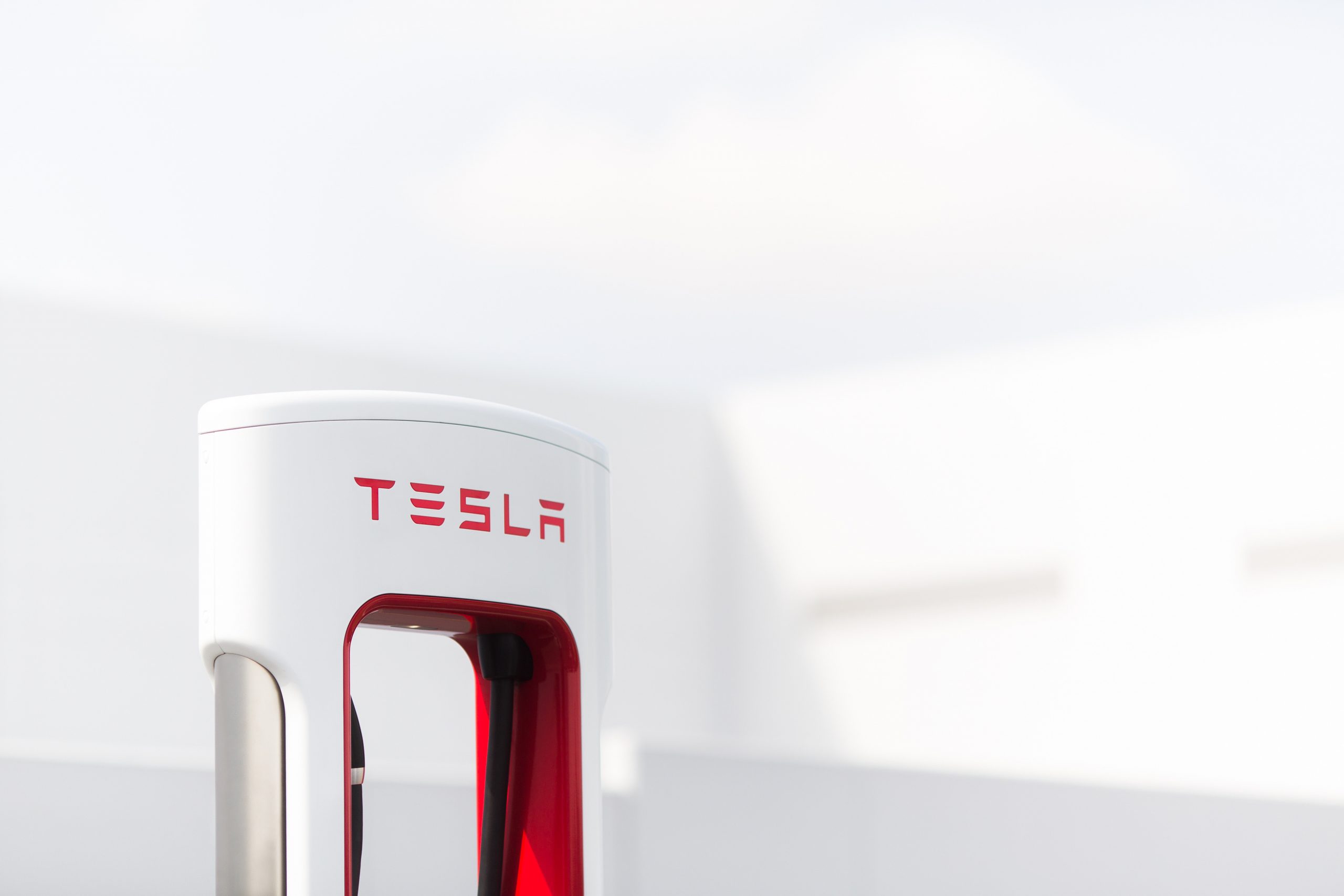
Tesla has added the 15th automaker to the growing list of companies whose EVs can utilize the Supercharger Network this year, as BMW is the latest company to gain access to the largest charging infrastructure in the world.
BMW became the 15th company in 2025 to gain Tesla Supercharger access, after the company confirmed to its EV owners that they could use any of the more than 25,000 Supercharging stalls in North America.
Welcome @BMW owners.
Download the Tesla app to charge → https://t.co/vnu0NHA7Ab
— Tesla Charging (@TeslaCharging) December 10, 2025
Newer BMW all-electric cars, like the i4, i5, i7, and iX, are able to utilize Tesla’s V3 and V4 Superchargers. These are the exact model years, via the BMW Blog:
- i4: 2022-2026 model years
- i5: 2024-2025 model years
- 2026 i5 (eDrive40 and xDrive40) after software update in Spring 2026
- i7: 2023-2026 model years
- iX: 2022-2025 model years
- 2026 iX (all versions) after software update in Spring 2026
With the expansion of the companies that gained access in 2025 to the Tesla Supercharger Network, a vast majority of non-Tesla EVs are able to use the charging stalls to gain range in their cars.
So far in 2025, Tesla has enabled Supercharger access to:
- Audi
- BMW
- Genesis
- Honda
- Hyundai
- Jaguar Land Rover
- Kia
- Lucid
- Mercedes-Benz
- Nissan
- Polestar
- Subaru
- Toyota
- Volkswagen
- Volvo
Drivers with BMW EVs who wish to charge at Tesla Superchargers must use an NACS-to-CCS1 adapter. In Q2 2026, BMW plans to release its official adapter, but there are third-party options available in the meantime.
They will also have to use the Tesla App to enable Supercharging access to determine rates and availability. It is a relatively seamless process.
News
Tesla adds new feature that will be great for crowded parking situations
This is the most recent iteration of the app and was priming owners for the slowly-released Holiday Update.

Tesla has added a new feature that will be great for crowded parking lots, congested parking garages, or other confusing times when you cannot seem to pinpoint where your car went.
Tesla has added a new Vehicle Locator feature to the Tesla App with App Update v4.51.5.
This is the most recent iteration of the app and was priming owners for the slowly-released Holiday Update.
While there are several new features, which we will reveal later in this article, perhaps one of the coolest is that of the Vehicle Locator, which will now point you in the direction of your car using a directional arrow on the home screen. This is similar to what Apple uses to find devices:
Interesting. The location arrow in the Tesla app now points to your car when you’re nearby. pic.twitter.com/b0yjmwwzxN
— Whole Mars Catalog (@wholemars) December 7, 2025
In real time, the arrow gives an accurate depiction of which direction you should walk in to find your car. This seems extremely helpful in large parking lots or unfamiliar shopping centers.
Getting to your car after a sporting event is an event all in itself; this feature will undoubtedly help with it:
The nice little touch that Tesla have put in the app – continuous tracking of your vehicle location relative to you.
There’s people reporting dizziness testing this.
To those I say… try spinning your phone instead. 😉 pic.twitter.com/BAYmJ3mzzD
— Some UK Tesla Guy (UnSupervised…) (@SomeUKTeslaGuy) December 8, 2025
Tesla’s previous app versions revealed the address at which you could locate your car, which was great if you parked on the street in a city setting. It was also possible to use the map within the app to locate your car.
However, this new feature gives a more definitive location for your car and helps with the navigation to it, instead of potentially walking randomly.
It also reveals the distance you are from your car, which is a big plus.
Along with this new addition, Tesla added Photobooth features, Dog Mode Live Activity, Custom Wraps and Tints for Colorizer, and Dashcam Clip details.
🚨 Tesla App v4.51.5 looks to be preparing for the Holiday Update pic.twitter.com/ztts8poV82
— TESLARATI (@Teslarati) December 8, 2025
All in all, this App update was pretty robust.
